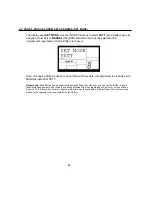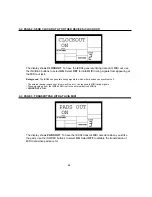
40
There are two
eighth notes
per
quarter note.
Thus, there are eight eighth notes per measure of 4/4
music.
There are four
16th notes
per quarter note. Thus, there are sixteen 16th notes per measure of 4/4
music.
There are eight
32nd notes
per quarter note. Thus, there are thirty-two 32nd notes per measure of 4/4
music.
There are also notes that span a greater number of beats than quarter notes. A
half note
equals two
quarter notes. Therefore, there are two half notes per measure of 4/4 music. A
whole note
equals four
quarter notes, so there is one whole note per measure of 4/4 music. (We keep referring these notes to
4/4 music because that is the most commonly used time signature in contemporary Western music.)
Triplets
The above notes divide measures by factors of two. However, there are some cases where
you want to divide a beat into thirds, giving three notes per beat. Dividing a quarter note by three
results in
eighth-note triplets
. The reason why we use the term eighth-note triplets is because the
eighth note is closest to the actual rhythmic value. Dividing an eighth note by three results in
16th-note
triplets.
Dividing a 16th note by three results in
32nd note triplets.
Rests
You can also specify where notes should
not
be played; this is indicated by a
rest,
which can
be the same length as any of the rhythmic values used for notes.
Dotted Notes and Rests
Adding a dot next to a note or rest means that it should play one-and-one-
half times as long as the indicated value. This of course does not apply to percussion parts.
Example:
A
dotted eighth note would last as long as three 16th notes (since an eighth note is the same as two 16th
notes).
Uncommon Time Signatures
4/4 (and to a lesser extent 3/4) are the most common time signatures in
our culture, but they are by no means the only ones. In jazz, both 5/4 (where each measure consists of
five quarter notes) and 7/4 (where each measure consists of seven quarter notes) are often used. In
practice, complex time signatures are played like a combination of simpler time signatures; for example,
some 7/4 compositions would have you count each measure not as 1, 2, 3, 4, 5, 6, 7 but as 1, 2, 3, 4,
1, 2, 3. It's often easier to think of 7/4 as one bar of 4/4 followed by one bar of 3/4 (or the other way
around, depending on the phrasing), since as we mentioned, 4/4 and 3/4 are extremely common time
signatures.
Summary of Contents for iED004
Page 1: ...Reference Manual iED04 Digital Drum Station...
Page 2: ......























